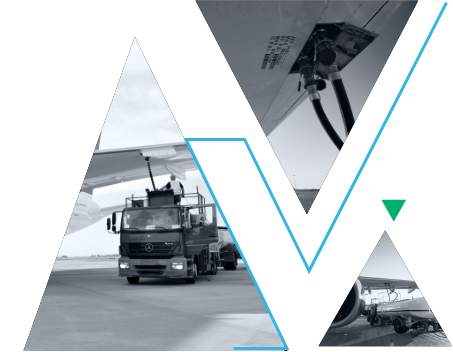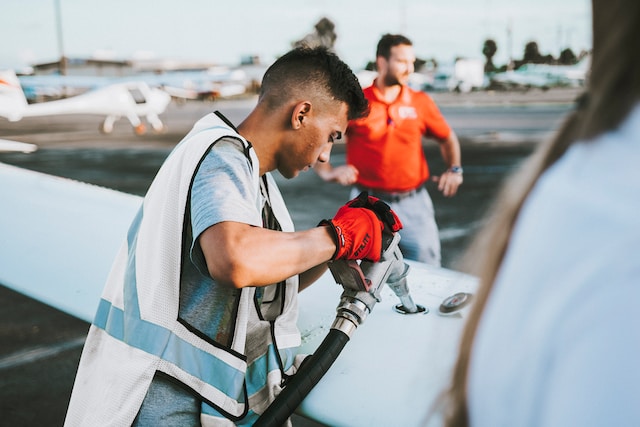Aviation Aircraft Fuel Supply at Bellingham International Airport (IATA: BLI, ICAO: KBLI)
Just Aviation excels in sustainable fuel management at Bellingham International Airport (BLI), integrating innovative monitoring tools and efficient delivery methods. By minimizing waste, we ensure that operations at BLI are optimized, dependable, and environmentally sustainable.
Just Aviation excels in sustainable fuel management at Bellingham International Airport (BLI), integrating innovative monitoring tools and efficient delivery methods. By minimizing waste, we ensure that operations at BLI are optimized, dependable, and environmentally sustainable.

Exceptional Services at Bellingham International Airport (IATA: BLI, ICAO: KBLI)
Just Aviation is instrumental in sustaining fuel services at Bellingham International Airport (BLI), providing reliable and environmentally mindful solutions that facilitate international travel. Our customized approach boosts BLIs profile as a leading fuel provider, supporting United Statess efforts in sustainable aviation.
Enhancing Jet Fuel Service Operations for Peak Performance at BLI
Adopted in alignment with DEF STAN 91-91 and ASTM D1655 standards, Jet A-1 fuel sustains aviation efficiency, with IATA and FAA adherence guaranteeing uninterrupted operations.
Jet A-1 fuel, optimized for business jet operations at high altitudes, reduces fuel consumption by 30%, resulting in major savings. This kerosene-based fuel is compatible with a broad range of jet aircraft. It has a boiling point range of 150°C to 250°C, with a flashpoint above 38ºC (100ºF) and a freeze point of -47ºC. Its energy density of 34.7 MJ/kg extends the aircrafts range, reducing the frequency of refueling on long journeys.
Fuel efficiency optimization is critical for business jet operations, leading to financial advantages and expanded flight capabilities. Fuel selection directly influences engine safety, efficiency, and overall performance. Compliance with aviation safety protocols ensures reliable and safe flight operations. The use of sustainable fuels helps reduce emissions and supports environmental sustainability. Adhering to fuel standards ensures regulatory compliance and prevents costly fines. Understanding fuel behavior in low temperatures is vital to avoid potential issues like fuel freezing. The goal remains the smooth and uninterrupted operation of business jets.

Quick Summary & Overview of Bellingham International Airport (BLI) Core Attributes

Bellingham International Airport (IATA: BLI, ICAO: KBLI, FAA LID: BLI) is situated three miles (5 km) northwest of Bellingham, in Whatcom County, Washington, United States. Covering 2,190 acres (886 hectares), it is the third-largest commercial airport in Washington. Bellingham serves as a low-fare alternative to Vancouver International Airport, with approximately 65% of its customers coming from Canada due to its proximity to the Peace Arch Border Crossing and downtown Vancouver.
Bellingham International Airport features a single asphalt runway: Runway 16/34: 6,701 feet (2,042 meters) long. The airport underwent significant terminal upgrades in two phases during the 1980s and another major expansion in the early 2010s. The initial terminal upgrades increased the number of gates and expanded the passenger processing area. In 2014, the terminal's size increased from 27,000 to 104,000 square feet, with enhancements to the ticketing lobby, baggage claim area, and gate boarding area. The main terminal includes three levels: the basement for storage, the ground floor for passenger processing, and the second floor for office space. The separate International Terminal, built in 1985, accommodates Federal Inspection Services and other functions. There are nine taxiways currently in use: Taxiway A: Runs parallel to Runway 10L/28R, serves as the last exit of Runway 10L, and connects to the terminal area. Taxiway B: Runs through Runway 10L/28R as an access taxiway to the Northern Air Tanker Base. Taxiways C, E, and F: Serve as exit taxiways that vary in width to accommodate certain size aircraft. Taxiway D: Intersects Runway 10L/28R and serves as a northern exit point for Runway 25. Taxiways G and H: Provide all exits for Runway 10R/28L and Runway 7. Taxiway J: Primary taxiway from the terminal area to the cargo ramps. Two hotspots exist on the airfield side of operations: Hotspot 1: Located at the intersection of Runway 10R/28L and Runway 7/25. Hotspot 2: Located at the intersection of Taxiway C and Runway 10L/28R. In 2023, Bellingham International Airport recorded 61,261 aircraft movements and served 620,000 passengers. The airport's strategic location and comprehensive facilities make it a crucial hub for both domestic and international travelers in the region.
Get expert support for aviation fuel services, including pricing and confirmation. Reach out to [email protected] or [email protected] to ensure everything is in place for your flight at Bellingham International Airport (BLI).